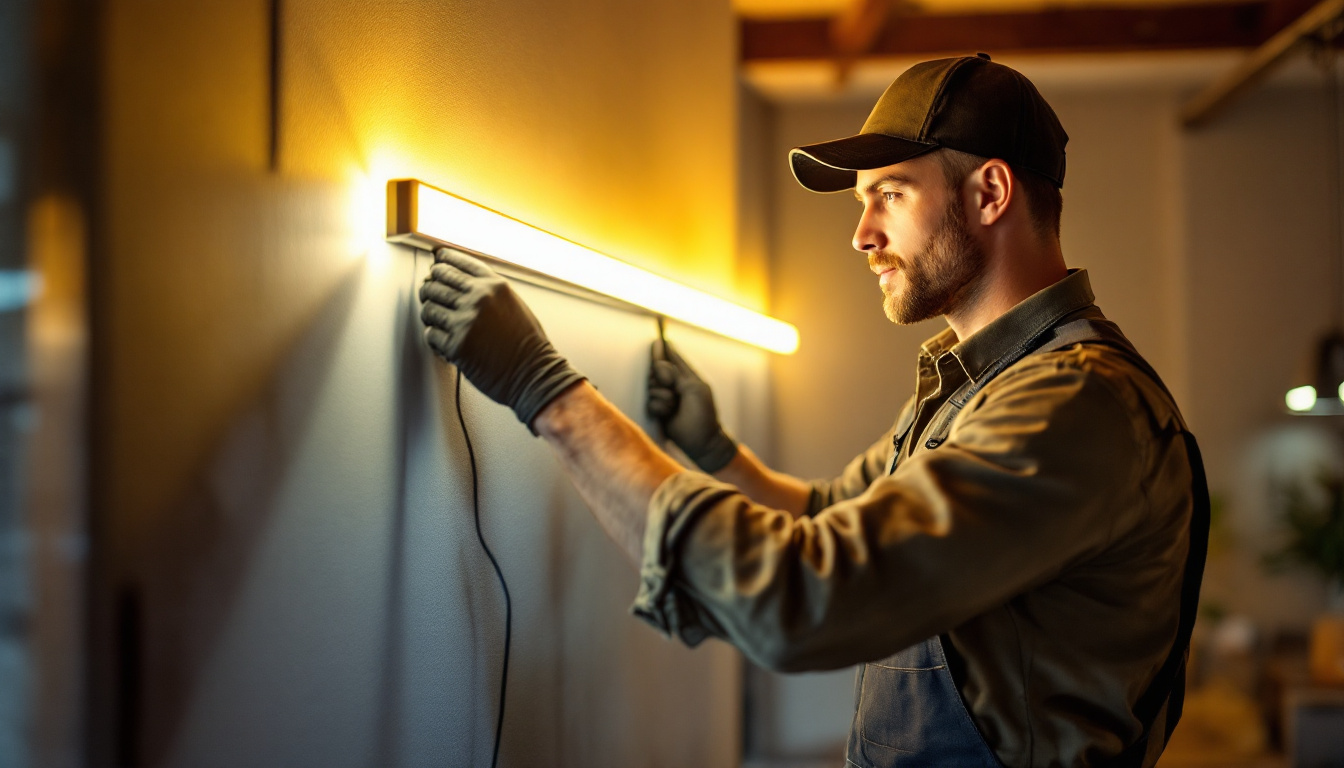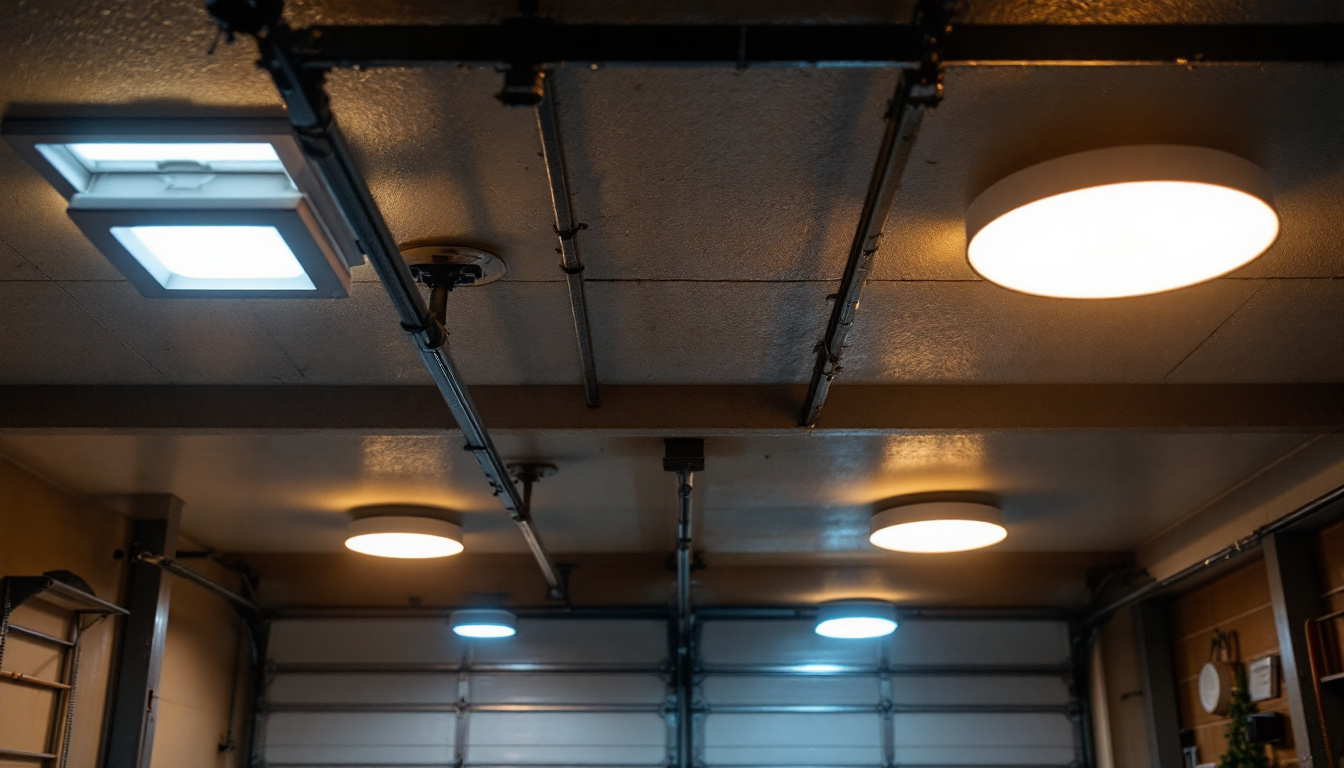
Lighting plays a crucial role in enhancing the safety, security, and aesthetic appeal of outdoor spaces. For lighting contractors, understanding the best practices associated with outdoor light poles is essential for delivering high-quality installations that meet client expectations. This article explores various aspects of outdoor light poles, including design considerations, installation techniques, and maintenance tips to ensure optimal performance.
Outdoor light poles serve as the backbone of any outdoor lighting system. They provide the necessary height and support for fixtures, ensuring that light is distributed effectively across the designated area. The choice of light pole can significantly impact the overall functionality and aesthetic of a lighting project.
There are several types of outdoor light poles available, each designed for specific applications. Common materials include aluminum, steel, and fiberglass. Aluminum poles are lightweight and resistant to corrosion, making them ideal for coastal areas. Steel poles offer durability and strength, suitable for high-traffic areas, while fiberglass poles provide a non-conductive option that is also resistant to harsh weather conditions.
When selecting a light pole, consider factors such as the height required, the weight of the fixtures, and the environmental conditions of the installation site. Each type of pole has its advantages and disadvantages, and understanding these can help contractors make informed decisions that align with project requirements. Additionally, the choice of pole can influence energy efficiency; for instance, poles designed to accommodate LED fixtures can lead to significant savings in energy consumption and maintenance costs over time.
The design of outdoor light poles should take into account both functionality and aesthetics. Lighting contractors should consider the following aspects:
Moreover, the integration of smart technology into outdoor light poles is becoming increasingly common. Many modern poles are equipped with sensors that can adjust brightness based on ambient light levels or motion detection, ensuring optimal energy use while enhancing safety. This technological advancement not only improves the functionality of the lighting system but also contributes to sustainability efforts by reducing energy waste. Furthermore, the ability to control lighting remotely through smart devices allows for greater flexibility in managing outdoor spaces, making it easier to adapt to varying needs throughout the year.
Another important aspect to consider is the installation process itself. Proper installation is crucial to ensure the stability and safety of the light poles, especially in areas prone to high winds or heavy snowfall. Contractors must adhere to local regulations and standards, which may dictate specific installation techniques or materials to be used. Additionally, regular maintenance checks are essential to prolong the life of the poles and fixtures, ensuring they continue to perform effectively and enhance the outdoor environment. This proactive approach not only safeguards the investment but also helps maintain the aesthetic appeal of the landscape over time.
Proper installation of outdoor light poles is critical to ensure safety and functionality. Following best practices can help avoid common pitfalls and ensure a successful project completion.
Before installation, conducting a thorough site assessment is essential. This involves evaluating the terrain, existing infrastructure, and potential obstacles that may affect the installation process. Understanding the site conditions will help in determining the appropriate pole height, spacing, and fixture selection.
Additionally, consider the local regulations and codes that may impact installation. Some areas may have specific guidelines regarding pole height, spacing, and lighting levels that must be adhered to. Ensuring compliance with these regulations can prevent costly rework and delays. Furthermore, it is beneficial to engage with local authorities or community stakeholders during the assessment phase. Their insights can provide valuable information about historical lighting issues or community preferences that may influence the design and placement of the light poles.
The foundation for light poles is vital for stability and longevity. A well-prepared foundation minimizes the risk of leaning or falling poles, which can pose safety hazards. The foundation should be deep enough to accommodate the pole’s height and the expected wind load.
Contractors should use concrete mix appropriate for outdoor conditions, ensuring it can withstand temperature fluctuations and moisture. Allowing the concrete to cure properly before installing the pole is also crucial for achieving maximum strength. In addition to the concrete mix, incorporating reinforcement materials such as rebar can further enhance the foundation’s durability. It is also advisable to create a slight slope around the base of the pole to facilitate drainage and prevent water accumulation, which can erode the foundation over time.
Electrical wiring plays a significant role in the functionality of outdoor lighting systems. Contractors should ensure that all wiring is rated for outdoor use and buried at a depth that complies with local codes. Using conduit can protect wiring from physical damage and moisture.
It is also essential to plan the electrical layout before installation. This includes determining the location of power sources, switches, and any control systems. Proper planning can streamline the installation process and reduce the likelihood of electrical issues in the future. Additionally, consider implementing energy-efficient lighting solutions, such as LED fixtures, which not only reduce energy consumption but also have a longer lifespan. Integrating smart technology, such as motion sensors or timers, can further enhance the efficiency of the lighting system, providing both convenience and cost savings for the end user.
The choice of lighting fixtures is as important as the poles themselves. Selecting the right fixtures can enhance the effectiveness of the lighting system and meet the project’s specific needs.
Understanding light distribution patterns is key to achieving the desired illumination levels. Different fixtures offer various distribution patterns, such as direct, indirect, or diffused light. Contractors should consider the intended use of the space when selecting fixtures to ensure adequate coverage and minimize dark spots.
For example, areas requiring high visibility, such as parking lots or walkways, may benefit from fixtures that provide a wider distribution pattern. Conversely, more focused lighting may be suitable for decorative purposes or accentuating specific features.
In today’s environmentally conscious market, energy efficiency is a significant consideration. LED fixtures are increasingly popular due to their longevity and low energy consumption. By choosing energy-efficient options, contractors can help clients reduce their operational costs and environmental impact.
Additionally, incorporating smart lighting controls, such as motion sensors or timers, can further enhance energy savings. These technologies allow for automatic adjustments based on occupancy or time of day, ensuring that lights are only on when needed.
During inspections, it’s also important to assess the surrounding area for any obstructions that may affect light distribution. Vegetation growth or debris accumulation can hinder the effectiveness of outdoor lighting and should be addressed promptly.
Regular cleaning of light fixtures is essential to maintain optimal performance. Dust, dirt, and grime can accumulate on fixtures, diminishing light output. Contractors should advise clients on proper cleaning techniques and schedules to ensure fixtures remain clear and effective.
In the event of damage, prompt repairs are crucial. Whether it’s replacing a broken fixture or addressing electrical issues, timely action can prevent further complications and ensure the safety of the installation.
Effective communication with clients is vital throughout the lighting project. By educating clients about the importance of proper lighting and maintenance, contractors can foster trust and ensure satisfaction with the final installation.
At the outset of a project, it’s important to set clear expectations regarding timelines, costs, and outcomes. Providing a detailed proposal that outlines the scope of work, materials, and estimated completion dates can help clients understand what to expect and mitigate potential misunderstandings.
Furthermore, discussing the benefits of different lighting options and maintenance practices can empower clients to make informed decisions that align with their needs and budget.
After the installation is complete, follow-up communication is essential. Checking in with clients to ensure they are satisfied with the lighting system can help identify any issues that may arise and demonstrate a commitment to quality service.
Providing ongoing support, whether through maintenance services or troubleshooting assistance, can enhance client relationships and lead to repeat business and referrals.
Outdoor light poles are a critical component of any outdoor lighting project. By adhering to best practices in design, installation, and maintenance, lighting contractors can deliver exceptional results that meet client expectations. Understanding the nuances of outdoor lighting, from selecting the right poles and fixtures to ensuring proper installation and upkeep, is essential for success in this field.
Ultimately, effective communication and education play a significant role in fostering positive client relationships and ensuring the longevity of lighting systems. By prioritizing these best practices, lighting contractors can enhance their reputation and contribute to safer, more inviting outdoor spaces.
Ready to elevate your outdoor lighting projects with the finest selection of poles and fixtures? Look no further than LumenWholesale, where we offer an extensive range of spec-grade lighting products at unbeatable wholesale prices. With our commitment to quality, affordability, and convenience, you can trust that you’re getting the best value for your investment. Say goodbye to inflated markups and hello to hassle-free bulk buying with free shipping. Take the next step in enhancing your outdoor spaces by visiting Wholesale Lighting at the Best Value and discover how we can brighten your lighting solutions today.

Discover why purchasing chandelier lights in bulk from local distributors might not be the best choice.

Discover innovative cost-saving strategies for lighting contractors with our guide on selecting and installing ceiling lights.

Discover the transformative power of magnetic LED light strips with insights from top lighting contractors.

Discover the top lighting solutions for your garage ceiling that not only brighten up your space but also enhance safety.